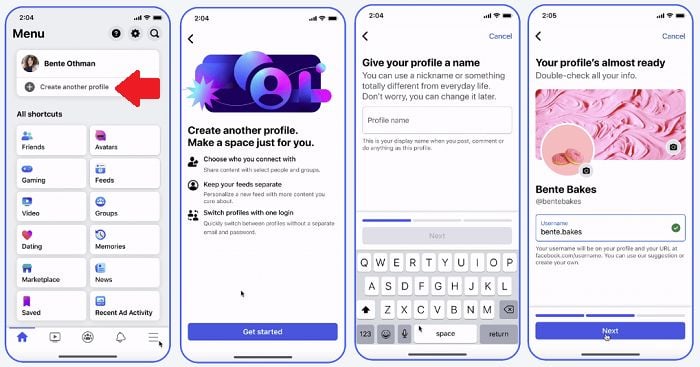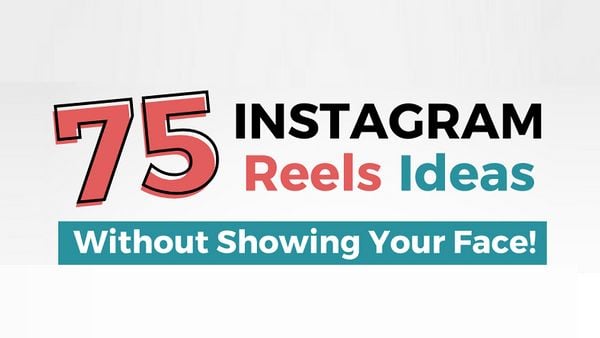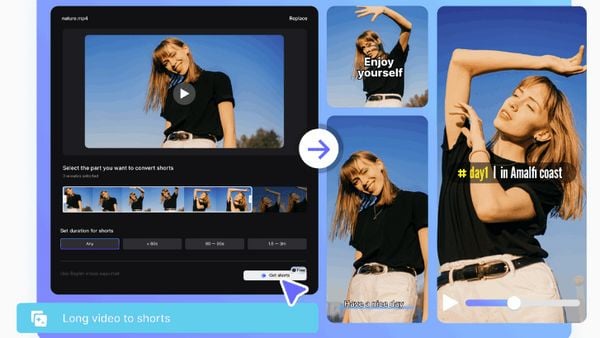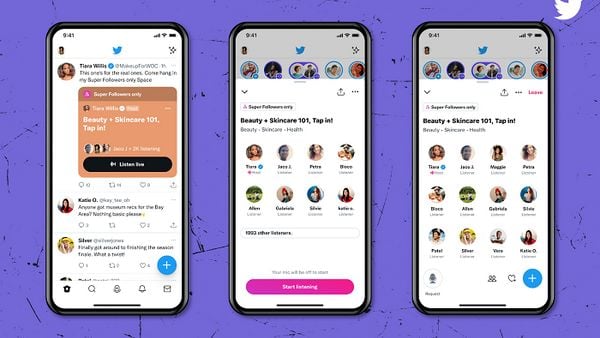Social media platforms are constantly evolving to meet the changing needs and preferences of their users. One emerging trend is the exploration of enclosed group sharing, where users can create alternate profiles or post under different personas within their main profile. Instagram and Facebook have already adopted this concept, with Instagram even experimenting with a new feature called “Flipside” that offers a separate profile space for private connections. Enclosed group sharing has the potential to encourage more frequent posting and engagement from users, as well as enhance connections and communities within social apps. However, as sharing behavior shifts, marketers will need to adapt their strategies and find new ways to reach specific audiences within these enclosed groups. These developments highlight excing possibilities for social media, promising a more personalized and connected user experience.
Enclosed Group Sharing on Social Media Platforms

This image is property of www.socialmediatoday.com.
Introduction
In the ever-evolving world of social media, platforms are constantly seeking ways to enhance user experience and engagement. One intriguing avenue that social media platforms are delving into is enclosed group sharing. This concept revolves around the creation of separate spaces within social media platforms where users can share content exclusively with specific groups, whether it be niche communities or private connections. Enclosed group sharing has the potential to revolutionize the way users interact on social media, enabling more personalized and private interactions. Let’s explore the potential of enclosed group sharing and the benefits it can bring to both users and platforms alike.
Exploring the Potential of Enclosed Group Sharing
To better understand the concept of enclosed group sharing, we must first grasp its fundamental principles. Enclosed group sharing empowers users to have control over the content they share, ensuring it is only visible to select groups of people. This shift towards more personalized and private interactions is a response to the increasing desire for privacy and authenticity in the digital realm. By allowing users to create spaces dedicated to specific communities or connections, social media platforms can cater to these evolving needs.
While enclosed group sharing presents numerous advantages, it also comes with its fair share of challenges. One of the prime benefits is enhanced privacy and security for users. By having designated spaces for specific groups, users can share content without the fear of it being seen by unintended audiences. This creates a sense of trust and authenticity within these enclosed groups, fostering more genuine interactions. Furthermore, enclosed group sharing facilitates the creation of niche communities and special interest groups, leading to deeper connections and shared experiences.
However, there are also drawbacks to enclosed group sharing. It may lead to a decline in user-generated content on platforms that rely heavily on public posting. For example, Facebook has seen decreased user-generated posts despite increased activity within closed groups. This decline in public posts poses a challenge for marketers who are used to reaching broad audiences with their advertising strategies. As enclosed group sharing becomes more prevalent, marketers will need to adapt and consider new ways to reach their target audiences within these exclusive spaces.

This image is property of www.socialmediatoday.com.
Benefits of Enclosed Group Sharing
Enhanced Privacy and Security for Users:
One of the primary benefits of enclosed group sharing is the heightened privacy and security it offers users. When sharing content within a closed group, users can rest assured that their posts are only visible to the chosen members of that group. This added layer of privacy encourages users to express themselves more authentically, fostering deeper connections and trust within these enclosed spaces.
Facilitation of More Genuine and Authentic Interactions:
The enclosed nature of these groups encourages members to engage in more genuine and authentic interactions. With content specifically tailored for a particular community or connection, users can share their thoughts, opinions, and experiences without judgment or fear of backlash from a wider audience. This creates a supportive environment for individuals to connect on a deeper level, facilitating meaningful friendships and connections.
Creation of Niche Communities and Special Interest Groups:
Enclosed group sharing also opens the doors to the creation of niche communities and special interest groups. Users can find spaces dedicated to their specific passions and interests, connecting with like-minded individuals who share their enthusiasm. This creates opportunities for more focused discussions, collaborations, and the exchange of unique ideas. These communities can serve as valuable resources for individuals seeking guidance, advice, or simply a place to belong.
Increased User Engagement and Activity within Enclosed Groups:
With enclosed group sharing, platforms can witness increased user engagement and activity within these exclusive spaces. By providing users with the opportunity to connect on a deeper level with their communities, platforms can foster a sense of belonging and encourage frequent participation. This increased engagement not only benefits individual users but also creates a vibrant and lively ecosystem within the platform itself.
Current Examples of Enclosed Group Sharing
Instagram: Alternate Profiles for Different Communities:
Instagram, one of the leading social media platforms, has already recognized the potential of enclosed group sharing. Users can create alternate profiles within their main account, allowing them to share content tailored to different communities. This feature is particularly useful for individuals with diverse interests, enabling them to separate their content and engage with specific communities without overlapping audiences.
Instagram: Flipside – Separate Profile Space for Private Connections:
Instagram is also experimenting with a new feature called Flipside. This feature offers users a separate profile space exclusively for engaging with private connections. It allows users to maintain their public profile while having a designated space for sharing more personal content with a select group of individuals. This innovation ensures that users can engage with their private connections in a more intimate and secure way.
Facebook: Enclosed Group Sharing Options:
Facebook, another social media giant, has invested in enclosed group sharing options. The platform allows users to create closed groups, which are exclusive spaces where members can share content with a limited audience. These closed groups create a sense of community and enable individuals to connect based on common interests, goals, or affiliations. Facebook recognizes the value in fostering these enclosed spaces as they can lead to increased engagement and user satisfaction.
Twitter: Facets – Posting under Different Personas:
Twitter, known for its brevity and public nature, has also experimented with enclosed group sharing options. In the past, Twitter introduced a feature called Facets, which allowed users to post under different personas within their main profile. This feature enables users to share content that is relevant to different facets of their personality or interests, catering to specific audiences while maintaining a unified presence.

This image is property of www.socialmediatoday.com.
Impact on User Posting and Engagement
As enclosed group sharing options become more prevalent, platforms have noticed a shift in user posting behavior and overall engagement. While platforms like Facebook have seen increased activity, there has been a decline in user-generated posts in public spaces. Users are resorting to enclosed groups to share content, limiting their public exposure. This change poses challenges for marketers who rely on broad reach for their advertising strategies.
Given this shift, marketers will need to adopt new marketing strategies to align with enclosed group sharing. Platforms like Twitter, with their Facets feature, offer an opportunity for more specific ad targeting within these exclusive spaces. By understanding the interests and personas of users within these groups, marketers can tailor their advertising efforts to reach their target audiences more effectively.
The Need for New Marketing Strategies
With the rise of enclosed group sharing, marketers will need to adapt their strategies to continue reaching their desired audiences. Traditional advertising techniques that rely on public posts and broad reach may become less effective. Instead, marketers should focus on understanding the dynamics and interests of various enclosed groups and tailor their advertising efforts accordingly.
Rather than targeting a wide audience, marketers can ensure relevancy and engagement by focusing on specific niche communities. By aligning their advertisements with the interests and needs of these communities, marketers can establish a more personalized connection and build trust with potential customers.
Furthermore, marketers should also consider collaborative approaches within these enclosed spaces. Building partnerships with influencers and community leaders within these groups can amplify marketing efforts and enhance brand visibility. By connecting with these influential individuals, marketers can tap into their established networks and leverage their credibility to authentically promote their products or services.

This image is property of www.socialmediatoday.com.
Enhancing Connections and Communities in Social Apps
The development of enclosed group sharing features opens up new possibilities for enhancing connections and communities within social apps. These features enable platforms to cater to the growing demand for privacy, authenticity, and more personalized interactions. By providing users with exclusive spaces to connect with specific groups, platforms can foster deeper connections and more meaningful interactions.
Enclosed group sharing strengthens relationships by creating trust and authenticity. With the assurance that their content is only visible to intended audiences, users feel more comfortable sharing personal experiences, opinions, and thoughts. This vulnerability leads to deeper connections and the formation of genuine friendships.
Moreover, enclosed group sharing fosters a sense of belonging and community. By allowing users to connect with like-minded individuals who share their passions and interests, platforms can create tight-knit communities that offer support, guidance, and a safe space for expression. These communities serve as valuable resources for individuals seeking advice, inspiration, or simply a place to share their experiences.
Enclosed group sharing can also benefit social media platforms themselves. By cultivating engaged and active communities within these exclusive spaces, platforms can increase user retention, satisfaction, and overall platform usage. This increased engagement boosts the visibility and popularity of the platform, attracting new users and enhancing its position within the social media landscape.
The Future of Enclosed Group Sharing and its Implications
The introduction of enclosed group sharing represents a significant shift in the way users interact on social media platforms. With a focus on privacy, authenticity, and the creation of niche communities, this concept has the potential to reshape the social media landscape.
In the future, we can expect to see more platforms adopting enclosed group sharing features and improving upon existing ones. As users continue to prioritize privacy and tailored interactions, platforms will strive to meet these demands by offering more diverse and customizable settings.
Furthermore, the implications of enclosed group sharing extend beyond individual users and platforms. Marketers and advertisers must adapt to this new landscape by developing innovative strategies that align with enclosed group sharing. By understanding the dynamics, interests, and needs of these exclusive spaces, marketers can craft targeted campaigns that resonate with specific audiences and drive tangible results.
Enclosed group sharing has the power to transform social media platforms into thriving, interconnected communities rooted in authenticity and genuine connections. As users seek more private and personalized experiences, these features will continue to shape the way we engage and interact on social media platforms for years to come.

This image is property of www.socialmediatoday.com.
